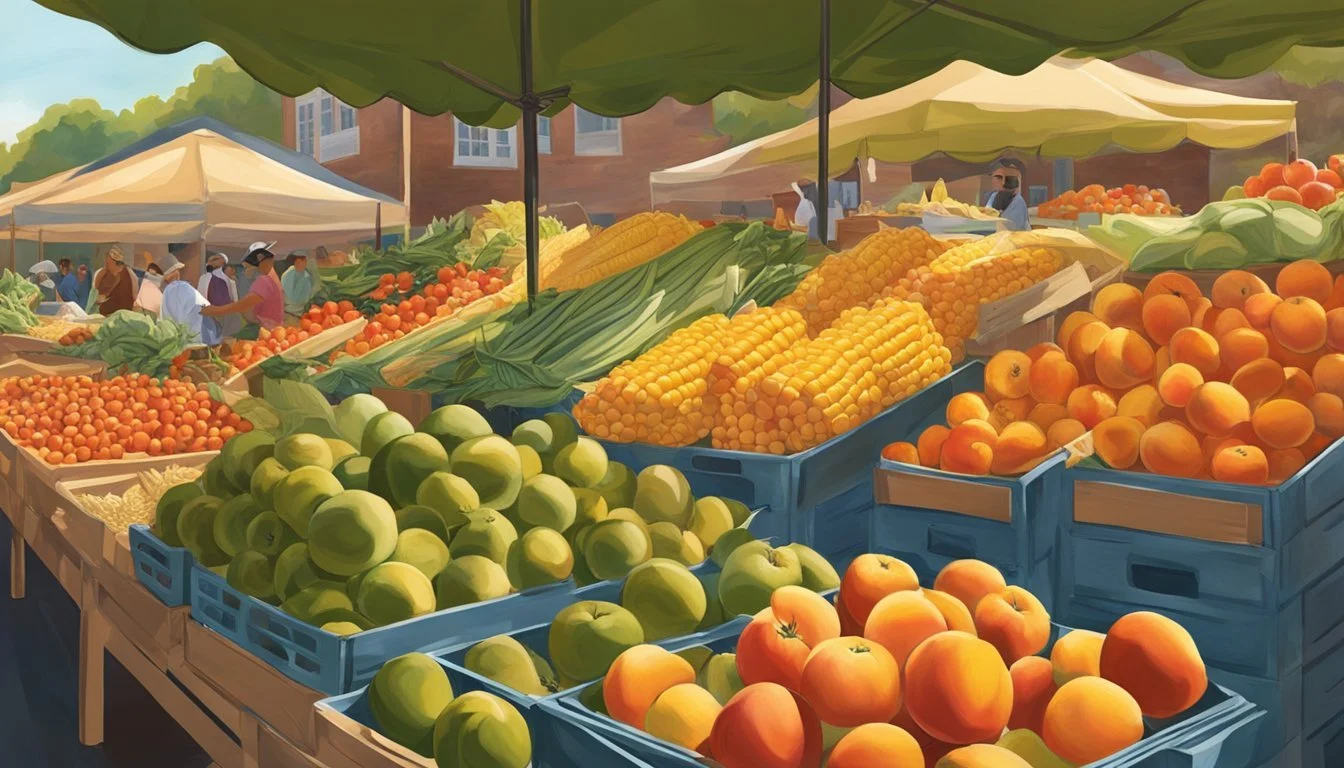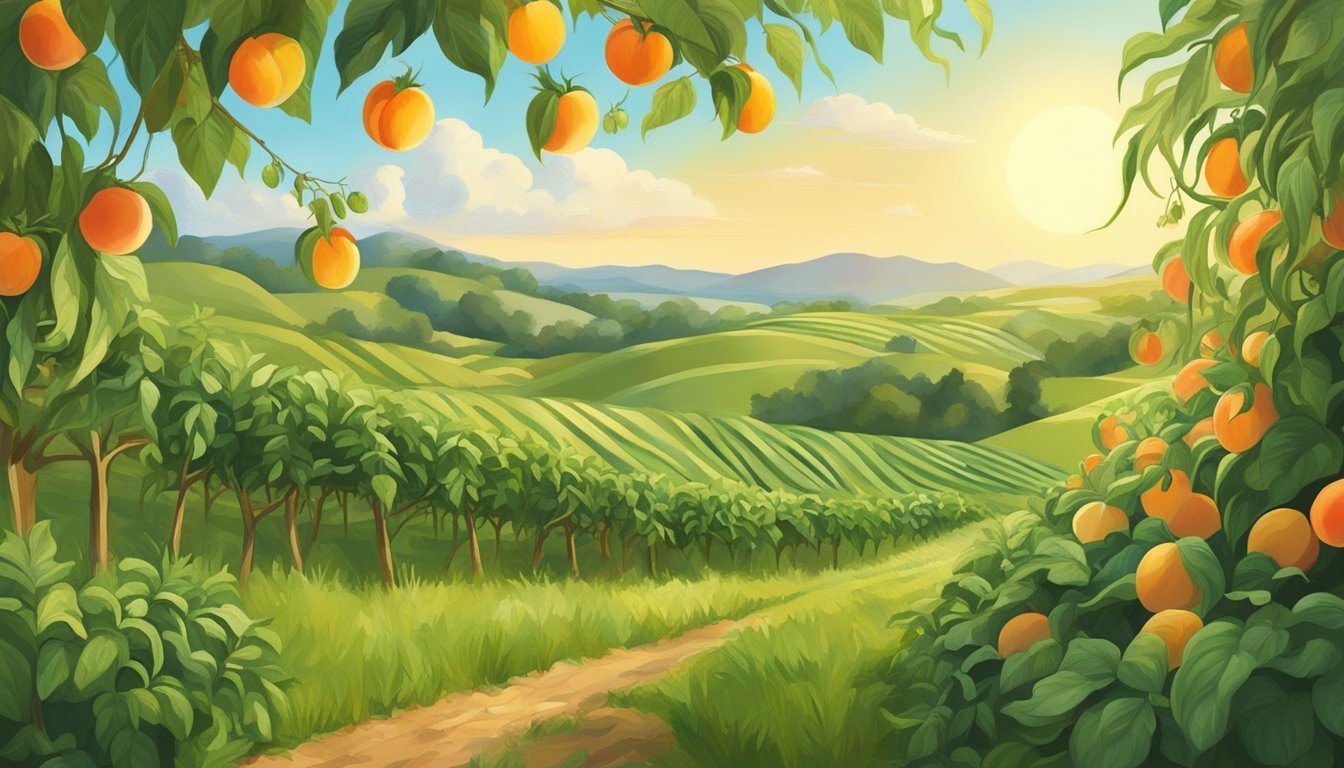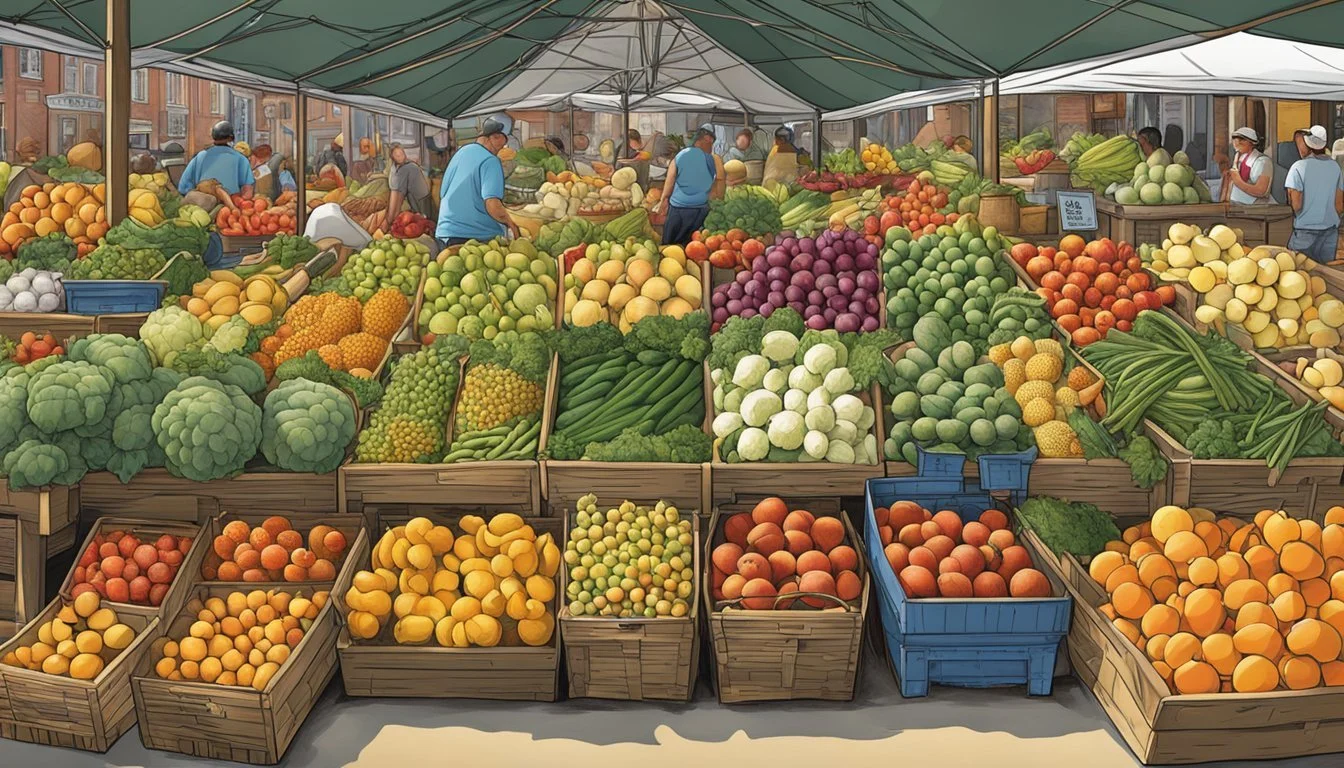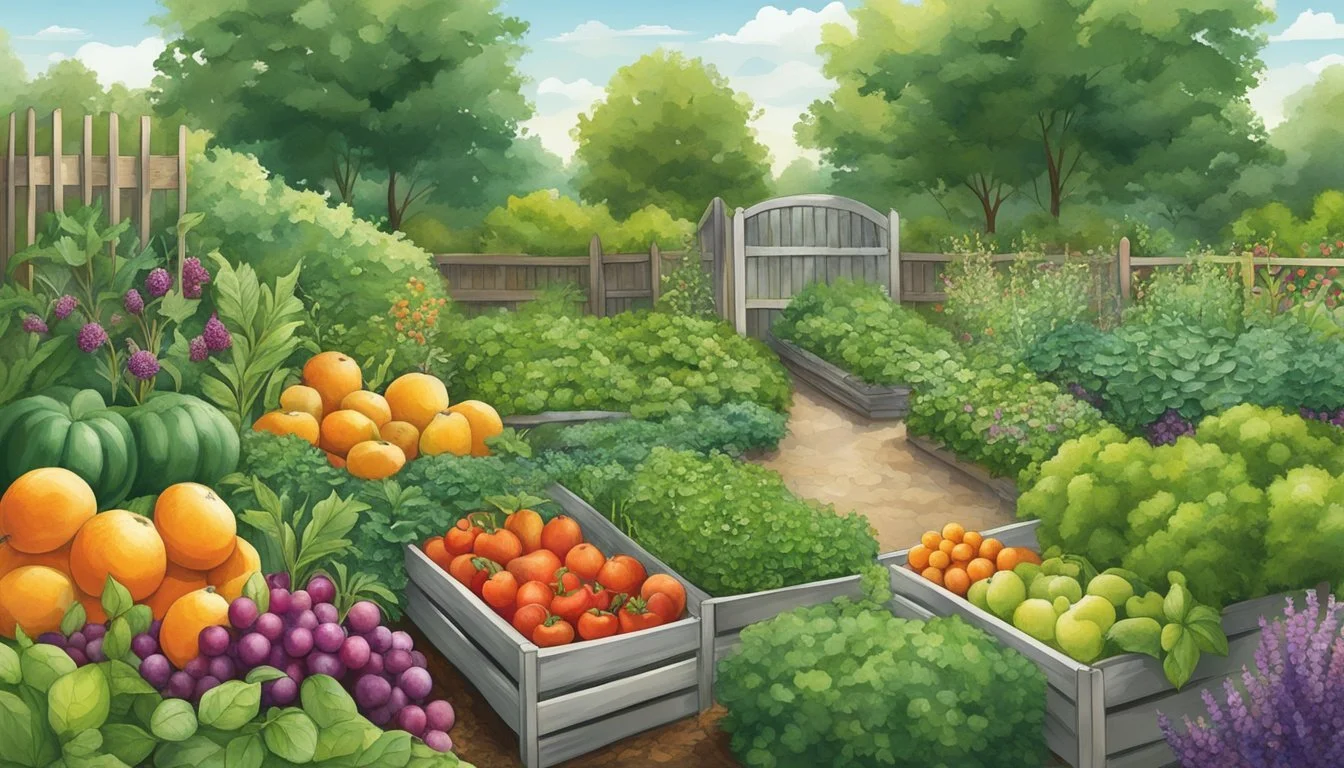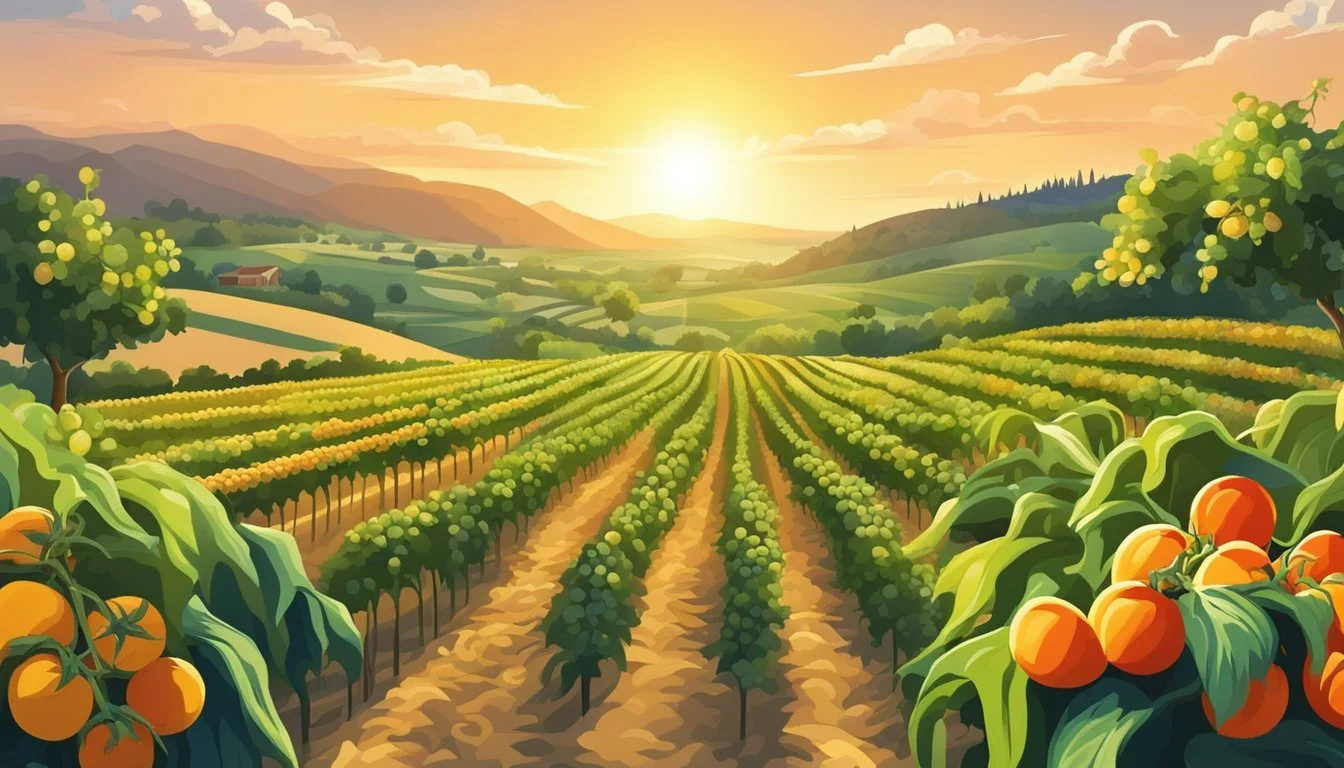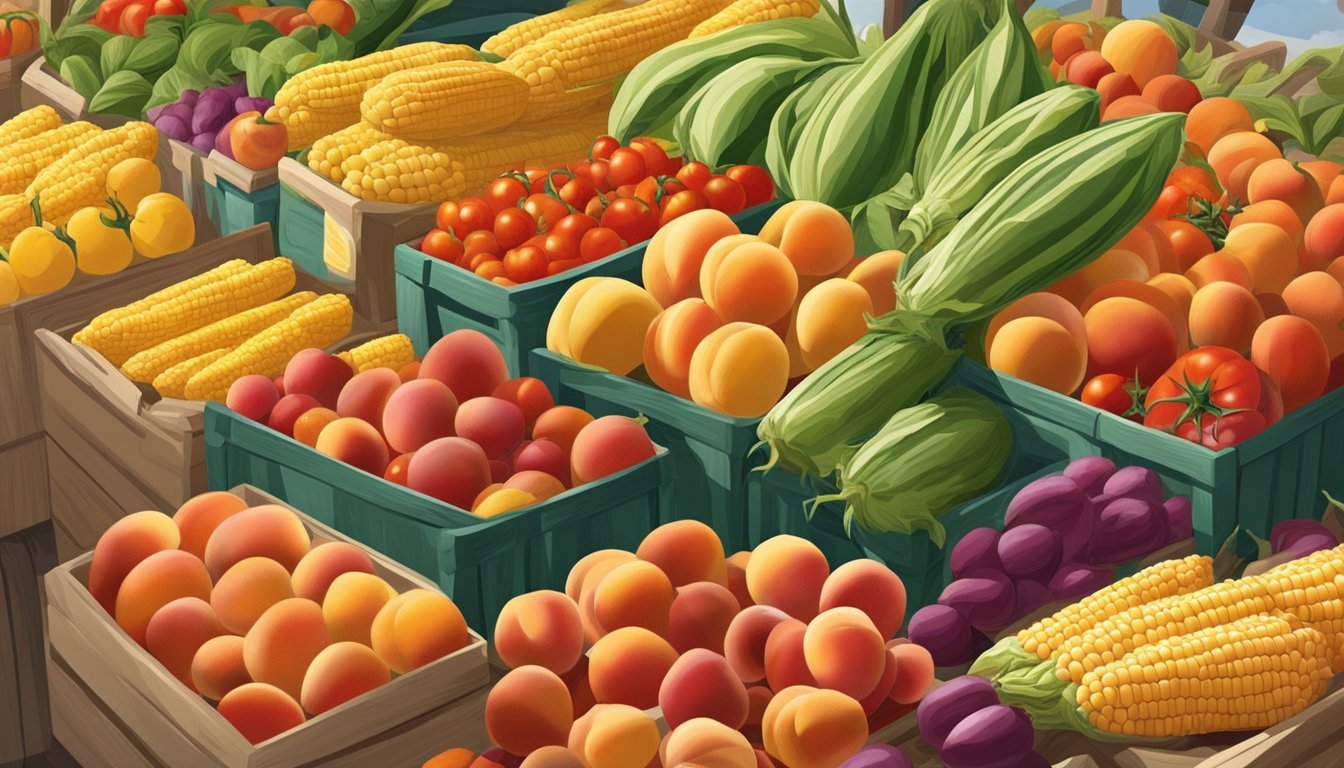Maryland Seasonal Fruit & Vegetables in August
Your Fresh Guide
This Article is Part of our Maryland Seasonal Fruit & Veg Calendar
August in Maryland heralds a bountiful period for fruit (What wine goes well with fruit?) and vegetable lovers. This month, the state's farms and gardens are at their peak, offering a variety of fresh, flavorful, and nutritious produce. With local farmers' markets and roadside stands overflowing with goods, consumers have access to some of the freshest seasonal offerings available, encouraging healthy eating habits and support for local agriculture.
The warmth of the summer in Maryland allows a diverse range of fruits and vegetables to flourish. For fruit enthusiasts, August is the time for savoring sweet and juicy peaches, plump blackberries (how long do blackberries last?), and ripe melons, which are among the natural treats of the season. On the vegetable front, August presents an array of choices, including crisp corn (how long does corn last?), tender green beans, succulent tomatoes, and versatile summer squash, all of which reach their peak during this month.
Maryland's rich soils and favorable climate contribute to the excellent quality of its August produce. This abundance not only satisfies local demand but also enables residents to indulge in the practice of canning and preserving, ensuring the flavors of summer can be enjoyed throughout the year. With a focus on freshness and local patronage, Maryland's August produce stands as a testament to the state's agricultural prowess.
Seasonal Overview
In August, Maryland's agriculture offers a variety of fresh and local produce. The region's climate facilitates a rich harvest that includes both fruits and vegetables.
Understanding Maryland's Growing Season
Maryland experiences a full temperate growing season, which typically extends from early spring through late fall. Summer, in particular, boasts warm temperatures and extended daylight hours, creating an ideal environment for a wide array of produce to thrive. The state's diverse geographic regions, from the Atlantic coast to the Appalachian mountains, allow for a versatile set of crops.
August's Seasonal Significance
As summer reaches its peak in August, Maryland's produce selection is both abundant and vibrant. This month is significant for sourcing local fruits and vegetables at their freshest. Here are some examples of Maryland produce available in August:
Fruits:
Cherries (how long do cherries last?)
Peaches
Berries (such as blueberries and blackberries)
Melons (like cantaloupe (how long does cantaloupe last?)and watermelon)
Vegetables:
Corn
Tomatoes
Green Beans
Cucumbers (how long do cucumbers last?)
Eggplant (how long does eggplant last?)
The summer heat not only supports the growth of these seasonal crops but also ensures they're harvested at peak ripeness, flavor, and nutritional value.
Fruits in Season
In Maryland, August is the peak time for a variety of fresh and juicy fruits. From the succulent stone fruits to the refreshing melons, this month offers a rich bounty to the residents and visitors of the state. These fruits are not only fresh but also packed with flavor, making them perfect for eating fresh, in salads, or for use in desserts.
Stone Fruits
Peaches: Maryland peaches are at their juiciest in August. Known for their fuzzy skin and sweet flesh, they are ideal for pies, cobblers, or simply eaten fresh.
Plums: With a variety of plums available, they offer a burst of sweet and tart flavors, great for jams or eating by hand.
Berries
Berries: While many berries are coming to the end of their season, some types like blackberries can still be found fresh and ripe in the local markets.
Melons
Watermelon: A classic summer staple, watermelons are widely available and perfect for a refreshing treat during hot August days.
Cantaloupe: Also known as muskmelon, cantaloupes with their sweet and fragrant flesh are bountiful in August.
Tropical and Exotic Fruits
Although not traditionally grown in Maryland, some tropical and exotic fruits might be available through import. However, these are not typically native to the region’s August seasonal produce.
Vegetables in Season
August in Maryland boasts a rich palette of harvestable vegetables, with an array of root vegetables, leafy greens, and other garden favorites reaching peak ripeness.
Root Vegetables and Tubers
Corn: Known as a staple of summer, Maryland's corn reaches its peak sweetness in August, making it perfect for both grilling and boiling.
Carrots: These crunchy, nutritious root vegetables continue to be harvested in Maryland through August, often enjoyed raw in salads or cooked in various dishes.
Leafy Greens
Kale: By August, Maryland kale is tender yet hardy, ready for salads or a quick sauté.
Lettuce: Various lettuce types thrive in Maryland’s summer, providing a fresh base for salads.
Squashes and Gourds
Squash (Summer): Summer squash varieties like zucchini are in full swing, with their versatility shining in both raw and cooked preparations.
Squash (Winter): Towards the end of August, early varieties of winter squash may start to become available, hinting at the forthcoming autumn harvests.
Nightshades and Cucurbits
Cucumbers: These refreshing, crisp vegetables are still being picked in abundance, ideal for cool summer salads.
Eggplant: Eggplants reach their peak in August, offering a spongy texture that pairs well with summer grilling.
Peppers: Both sweet and hot varieties of peppers are ripe for the picking, ready to add a pop of color and flavor to any dish.
Tomatoes: Tomatoes, a beloved garden staple, are at their juiciest and most flavorful, perfect for sandwiches, salads, or sauces.
Herbs and Other Plantings
In Maryland’s August climate, gardeners will find that an array of herbs can thrive, providing both culinary delight and aromatic pleasure. This period marks a suitable time for both starting certain herbs and nurturing established plantings.
Culinary Herbs
Basil: Thrives in warm weather and should be harvested continuously to encourage a bushier plant.
Parsley: Prefers partial shade in the hot season and can be sown directly into the soil or started indoors for later transplant.
Thyme: Best planted where it will receive plenty of sunlight, requiring well-drained soil to prosper.
Aromatic and Medicinal Plantings
While there is an overlap between culinary and aromatic herbs, certain plantings are prized for their medicinal qualities and fragrances. Gardeners in Maryland tend to plant these herbs in August:
Lavender: Prefers full sun and good drainage, and it offers a soothing fragrance well-suited to therapeutic uses.
Mint: Known for its vigorous growth, mint should be contained to prevent it from overtaking other plantings.
Chamomile: Valued for its calming properties, chamomile can be started this month for later harvest.
Careful attention to planting dates and maintenance of these herbs will ensure a robust garden full of aroma and flavor throughout the growing season.
Harvest and Storage Tips
In Maryland, August marks a bountiful month where careful harvesting and appropriate storage are vital to prolong the freshness of fruit and vegetables. Optimal practices ensure produce maintains quality and flavor, whether preserved or consumed fresh.
Proper Harvesting Techniques
One should harvest fruits like cherries and currants when they are plump and fully colored. Vegetables like corn and cucumbers should be picked when firm and vibrant, but prior to them becoming overly mature. For example, corn kernels are at peak sweetness when they're milky inside upon puncture. Eggplant should be harvested while the skin remains glossy and the flesh firm.
Cherries: Harvest when deep red and fully ripe.
Currants: Look for full color development.
Corn: Pick when silks are brown but the husks are still green.
Cucumbers: Harvest while firm and before seeds become hard.
Storage for Freshness
Storing harvested produce at correct temperatures is crucial. For instance, corn should be refrigerated immediately to slow sugar to starch conversion. Cherries and currants require cooling to extend freshness. Most vegetables benefit from refrigeration, though some, like cucumbers, are prone to cold damage if stored below 50°F.
Corn: Refrigerate promptly; consume within 1-2 days for best taste.
Cherries/Currants: Keep cool and dry; consume or process within a few days.
Cucumbers/Eggplant: Store in a cool place; avoid chilling injury from cold temperatures.
For preservation:
Canning: Suitable for cherries and cucumbers (as pickles). Follow safe canning practices to prevent spoilage.
Freezing: Corn kernels can be frozen after blanching. Fruits like cherries can be frozen whole or pitted.
Jam: Cherries and currants are ideal for making jam, using proper canning techniques to seal and store.
Pickles: Cucumbers transform into pickles through the process of pickling, extending their shelf life significantly when canned correctly.
Maryland's Agriculture
Maryland’s agriculture is a testament to the state’s fertile lands and varied climate, which allow for a diverse array of crops to flourish. The state's geography and seasons play a crucial role in determining local farming practices and the push towards organic and sustainable methods.
Local Farming Practices
Maryland farmers employ a variety of cultivation methods to grow an abundance of seasonal fruits and vegetables. August marks the peak of harvest for many crops. They prioritize crop rotation and the use of cover crops to maintain soil health and prevent erosion. In August, the farms become especially vibrant with the harvest of summer crops such as corn, tomatoes, peaches, and melons.
Key August Harvests:
Fruits: Peaches, Melons
Vegetables: Corn, Tomatoes
Farmers markets and u-pick farms are popular venues for consumers to obtain fresh, local produce during this season.
Organic and Sustainable Agriculture
Organic agriculture is gaining traction in Maryland, with farmers adopting practices that meet the USDA organic standards. These standards prohibit the use of synthetic fertilizers, pesticides, and genetically modified organisms (GMOs).
Organic Practices Include:
Natural pest control
Use of organic fertilizers
Sustainable agriculture also focuses on conserving water, reducing carbon footprint, and protecting the local ecosystem. Maryland’s agricultural community is becoming increasingly supportive of these practices, recognizing their long-term benefits for the state's environment and residents.
Culinary Inspirations
August in Maryland brings a bountiful harvest that inspires a variety of culinary creations. From fresh salsa to vibrant salads and refreshing ciders, the state's seasonal offerings provide an exceptional opportunity for both professional chefs and home cooks to explore flavors and preservation methods.
Seasonal Recipes
Salsa: The ripe, juicy tomatoes of August are perfect for creating a homemade salsa. They might combine these with sweet corn, spicy peppers, and a touch of cilantro for a fresh taste that captures the essence of summer.
Peach Salsa:
Ingredients: peaches, tomatoes, red onion, jalapeño, lime juice, cilantro
Preparation: Peaches and tomatoes are diced and combined with finely chopped red onion and jalapeño. Add a squeeze of lime juice and a handful of cilantro for brightness.
Salads: Summer salads become a showcase for Maryland’s produce. Chefs often recommend using a mixture of greens like chard as a base, topping them with slices of sweet, ripe stone fruits such as peaches and nectarines, and a sprinkle of crunchy carrot for a colorful and nutritious dish.
Stone Fruit Salad:
Ingredients: mixed greens, nectarines, peaches, plums, carrots, vinaigrette
Preparation: Toss mixed greens with thinly sliced stone fruits and julienned carrots. Drizzle with a vinaigrette of choice.
Preserving the Harvest
Cider: Fruit ciders offer a delicious way to preserve the flavors of August. Apples, not quite in peak season, begin to appear and are used by many Marylanders to produce early batches of apple cider. Some preserve this cider to enjoy throughout the coming months.
Apple Cider Preservation:
Method: Pasteurization
Storage: Glass bottles or freezer-safe containers
Pickling: Many vegetables, like cauliflower and carrots, can be preserved through pickling. This method allows these vegetables to be enjoyed long after their season has ended.
Pickled Vegetables: (What wine goes well with pickled vegetables?)
Ingredients: cauliflower, carrots, vinegar, water, salt, spices
Method: Vegetables are blanched and then submerged in a vinegar solution with spices.
Storage: Sealed jars, kept in a cool, dark place
Resource Guide
Maryland offers a wealth of resources for those interested in sourcing local seasonal fruits and vegetables. The state's abundant agricultural offerings are best experienced through its vibrant local markets and community-supported agriculture programs.
Local Markets and CSAs
In Maryland, a plethora of local markets provide access to the freshest produce during the month of August. Shoppers can expect to find items such as sweet corn, tomatoes, and melons, all harvested at their peak. The University of Maryland Extension provides a Vegetable Planting Calendar as a tool for consumers and growers alike to track and plan for the state's seasonal offerings.
Community-supported agriculture, or CSAs, are another avenue for obtaining fresh, locally-grown fruits and vegetables. CSA subscribers can enjoy a diverse array of August produce, which often includes varieties of peppers, eggplant, and summer squash.
Agricultural Events and Tours
The state celebrates its agricultural heritage with events and tours that invite the public to engage directly with the farming community. During these events, local experts frequently share insights on the best practices for vegetable planting and the current state of harvests, aligning with the recommendations from seasonal calendars. These experiences provide a hands-on approach to understanding Maryland's agricultural cycles and how to best support local producers.

